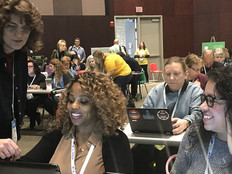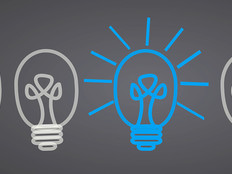TCEA 2018: How to Incorporate 3D Printing into Any Lesson Plan
At first, the 3D printers were neat gadgets that produced Yoda heads, Pikachus and other cool knickknacks.
Then, Clear Creek Independent School District librarians Shirley Dickey, Laura Gladney-Lemon and Mindy Hutt began to see the real educational value in their MakerBot machines.
“The point was to try and figure out how we could use the printers with our lessons throughout the building in different departments,” Hutt, a librarian at Clear Brook High School in Friendswood, Texas, said during a Feb. 7 session at the Texas Computer Education Association Convention & Exposition.
The trio offered advice for bringing 3D printing into a K–12 district and then coached audience members on how the printing could be used in different subject areas.
SIGN UP: Get more news from the EdTech newsletter in your inbox every two weeks!
3D Printing Can Impact Every Subject
For instance, Gladney-Lemon, a librarian at Clear Creek High School in League City, Texas, notes that a calculus teacher asked for help printing a solid of revolution on the 3D printer.
“It’s a visual representation of math they’d been doing all year long,” she said.
Students also have printed tessellations and a Pythagorean cup, Dickey, a librarian at Clear Lake High School in Houston, said.
Each school found a variety of uses for the 3D printers. In physics classes, students printed boats and cars for races, and in English classes, students designed a board game based on a book and 3D-printed the game pieces.
In social studies, students printed a map of Europe, while in science they printed a replica of a fingerprint so they could feel its raised ridges.
“The 3D printer is a really great tool for kinesthetic learners,” said Gladney-Lemon, referring to students who learn through physical activity.
It’s also a problem solver, she said.
For example, a band student had left the mouthpiece to his horn at home and came to the library to see if he could print another one.
“He thought of the 3D printer as a solution to his problem,” Gladney-Lemon said. “It represents a shifting mindset: We can use this to make what we need. The whole horn department has now come in and printed spare parts.”
Hutt said 3D printing is another resource in an educator’s blended learning toolkit.
“We look at it like, what are the students’ specific goals and what tools can we help create to help them,” she said. “The 3D printer is really great for personalized learning projects.”
Ask These Questions Before Choosing a 3D Printer
Before purchasing a 3D printer for school, some questions need to be asked and answered, Hutt said.
- Does the entire class need to print? “That could take forever,” Hutt said. “It takes too long to print a whole class of anything.” Gladney-Lemon suggested printing the best project out and having the teacher grade the other projects digitally. “You don’t need to print them to grade them,” she said.
- Who is going to pay for the filament? “We charge students 0.1 cents per gram and it costs us 0.05 cents per gram,” Hutt said. “We charge that much because there are a lot of mistakes. I don’t charge the kid who needs the printer for the science fair, though. That’s just free marketing.”
- Who will do the actual printing? 3D printing is time-consuming, and librarians already have a full-time job. “This is all time away from someone’s schedule,” Hutt said. She said she shows teachers how to print and often delivers the printer to their classrooms to have them complete the task.
EdTech will feature articles on breakout sessions and the latest trends from TCEA 2018. Check out more of our coverage on the TCEA 2018 conference page.








